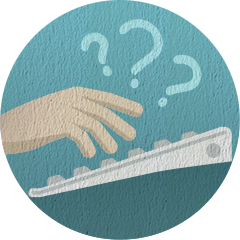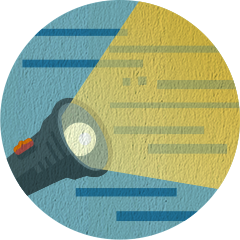Are we on the eve of a financial collapse? Is 2011 like 1932?
-
Background Eve Of Financial Collapse: 2011 Like 1932? Is history about to repeat itself or rhyme? They will say, nobody saw it coming. Who could have predicted it...? It is worth noting that the 1932 stock market crash is deemed to be the worst in the 20th century and not the one in 1929. It occurred three years after the first crash. In September 2011, we are now approximately three years after the financial crash of 2008-09, which was triggered by the bankruptcy of Lehman Brothers on September 15th, 2008. Three years after 1929, on July 8th, 1932, the Dow reached its lowest level of the 20th century and did not return to pre-1929 levels until 23rd November, 1954. The full impact was not felt until the next year. By 1933, the Great Depression was very real and it would take more than 22 years before the market would regain what had been lost. By mid-1930, the market was up 30% from the trough of the 1929 crash. However, by the summer of 1932, the Dow reached a low of just 11% of its high in 1929, or a loss of roughly 89%, trading more than 50% below the low it had reached on October 29th, 1929. If one had invested $1000 on September 3rd 1929 in the US stock market, and spread it across the Dow Jones components evenly, it would have gone down to $108 by July 8th, 1932 -- end of the worst crash -- or an 89.2% loss. To recover from that loss, one would have to watch one's portfolio grow by 825%! This did not happen until a decade after the end of the Second World War in 1945. All this happened despite assurances from prominent government and business leaders of-the-time that the worst was behind. Here is a news headline that may sound familiar: . September 1929: “There is no cause to worry. The high tide of prosperity will continue.†- Andrew W Mellon, US Secretary of the Treasury After the stock market crash in October 1929, the Dow Jones Industrial Average (DJIA) partially recovered in November-December 1929 and the early 1930s until 1932 happened. Reassuring headlines such as the following became increasingly common: . May 1, 1930: “I am convinced we have now passed the worst and with continued unity of effort we shall rapidly recover. There is one certainty of the future of a people of the resources, intelligence and character of the people of the United States – that is, prosperity!†– US President Hoover . August 29, 1930: “American labour may now look to the future with confidence.†– James J Davis, US Secretary of Labour . October 16, 1930: “Looking to the future I see in the further acceleration of science continuous jobs for our workers. Science will cure unemployment.†– Charles M Schwab So severe was the impact of the 1929-1932 crash, that by spring of 1933, when President Roosevelt (FDR) took the oath of office, unemployment in the US had risen from 8 to 15 million -- roughly 1/3rd of the non-farm workforce -- and the GDP had decreased by more than 45% from $103.8 billion to $55.7 billion. Although the depression was worldwide, no other country except Germany reached so high a percentage of unemployment as the US. The poor were hit the hardest. By 1932, New York's Harlem district had an unemployment rate of 50% and property owned or managed by African Americans fell from 30% to 5% in 1935. Farmers in the Midwest were doubly hit by economic downturns and the Dust Bowl. Schools, with budgets shrinking, shortened both the school day and the school year. The breadth and depth of the crisis made it the Great Depression. FDR, after assuming the presidency, promoted a wide variety of federally funded programs aimed at restoring the American economy, helping relieve the suffering of the unemployed, and reforming the system so that such a severe crisis could never happen again. After the crash in 1932: 1. The Securities and Exchange Commission (SEC) was established; 2. The US Congress passed the Glass-Steagall Act mandating a separation between commercial banks, which take deposits and extend loans, and investment banks, which underwrite, issue, and distribute stocks, bonds and other securities; 3. The Federal Deposit Insurance Corporation (FDIC) was established to insure individual bank accounts for up to $100,000; and 4. Works Projects Administration (WPA), the largest New Deal agency, was set up employing millions to carry out public works projects. However, while FDR's New Deal did help restore the GDP to its 1929 level and did introduce basic banking and welfare reforms, FDR refused to run up the government deficits that ending the depression required. Only when the federal government imposed rationing, recruited 6 million defence workers (including women and African Americans), drafted 6 million soldiers, and ran massive deficits to fight World War II did the Great Depression finally end. The extent of the economic devastation of the 1930s went far beyond the imagination of anyone in the financial markets or governments across the world. Conclusion Are we about to see a repeat of 1932 in 2011? With every passing day it feels like we are in the middle of a financial and economic global conflict. This troubling development points not only to an even more painful recession than anticipated, but also to the urgent need for international co-ordination to avoid something worse: all-out financial and economic confrontation between leading powers. We are now likely to see substantially more defaults and credit panics in the Eurozone and not just in smaller countries and emerging markets. Added to this are worrying signs that the credibility of Eurozone and American authorities is on the decline. The banking situation looks increasingly fraught and the system appears to be overwhelmed and unable to cope because of inadequate circuit breakers. Most of the time, financial conflict of this kind is painful and costly. It may lead to decades of lower international capital flows and could also have other far-reaching effects on politics and global peace. Unless the leading powers of the world take concerted action, there is a very real danger that we may all suffer from this rising uncertainty and extreme loss of confidence.
-
Answer:
I think you said it better than I can. How about 'continued economic uncertainty and languished growth'? I wrote a blog post about wealth inequity between 1929 and 2007, and you'll notice the parallels. http://reinventwork.com/the-lie-that-we-live-with/ It's about spending. So long as wealth inequity in the US exists to the degree we're seeing today, the rich can't possibly spend enough of their money to create multiplier effects and grow the economy. Further, throw in the falling value of the dollar, global debt, technological disintermediation of labor, a dysfunctional and polarized government, a diminishing middle class, oil and water scarcity, an aging population ... factors that prevent more spending and growth in the economy at the same scale we've seen since WWII. Our middle class will shrink and wealth will be transferred elsewhere, and our standard of living will fall. Well, most of us. This should be (and has been) expected.
Russell Mickler at Quora Visit the source
Related Q & A:
- How do I find a financial adviser?Best solution by Personal Finance and Money
- How much does a Financial Adviser make?Best solution by jobsearch.about.com
- Is there a Financial Conservation Standard for the Indvidual?Best solution by Yahoo! Answers
- Is anyone else having a problem with Youtube 2011?Best solution by Yahoo! Answers
- How do i become a financial analyst? What is a financial analyst?Best solution by Yahoo! Answers
Just Added Q & A:
- How many active mobile subscribers are there in China?Best solution by Quora
- How to find the right vacation?Best solution by bookit.com
- How To Make Your Own Primer?Best solution by thekrazycouponlady.com
- How do you get the domain & range?Best solution by ChaCha
- How do you open pop up blockers?Best solution by Yahoo! Answers
For every problem there is a solution! Proved by Solucija.
-
Got an issue and looking for advice?

-
Ask Solucija to search every corner of the Web for help.

-
Get workable solutions and helpful tips in a moment.

Just ask Solucija about an issue you face and immediately get a list of ready solutions, answers and tips from other Internet users. We always provide the most suitable and complete answer to your question at the top, along with a few good alternatives below.